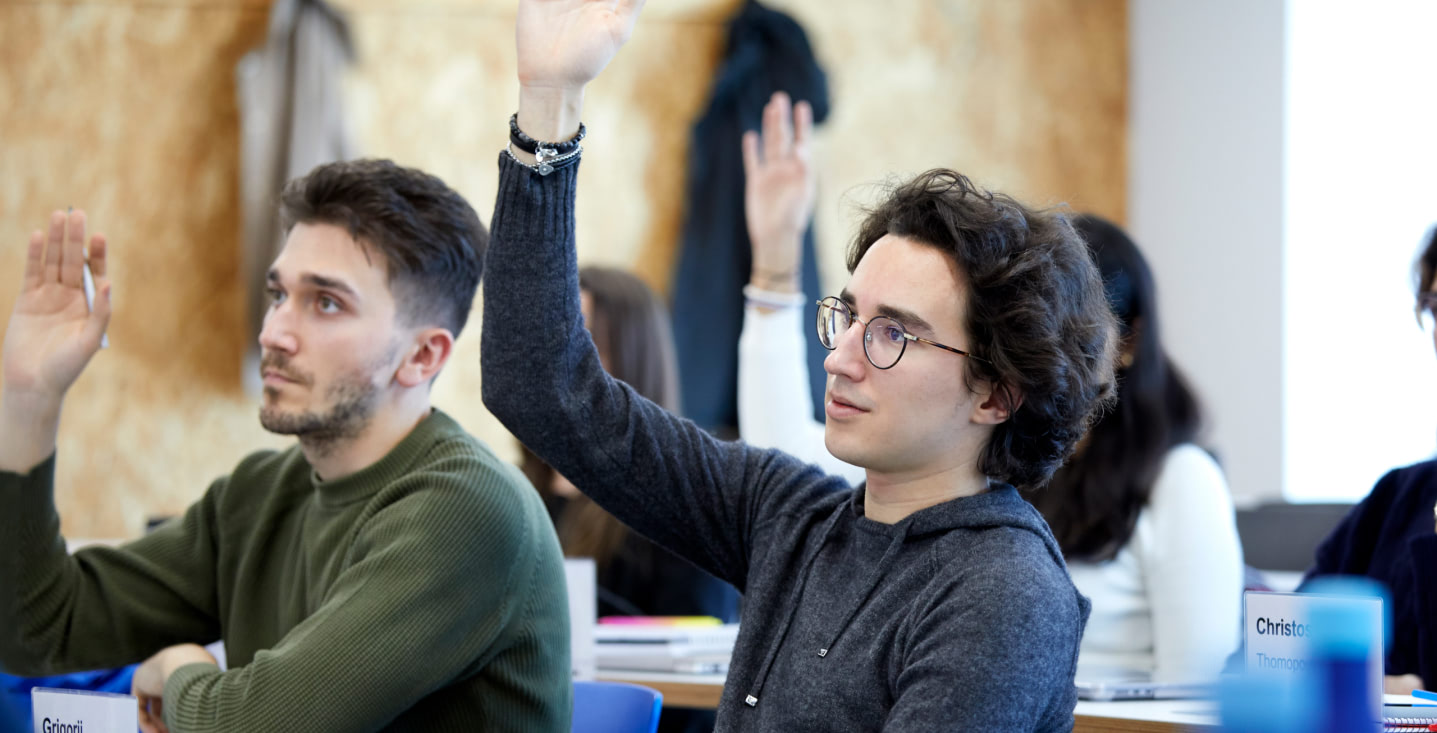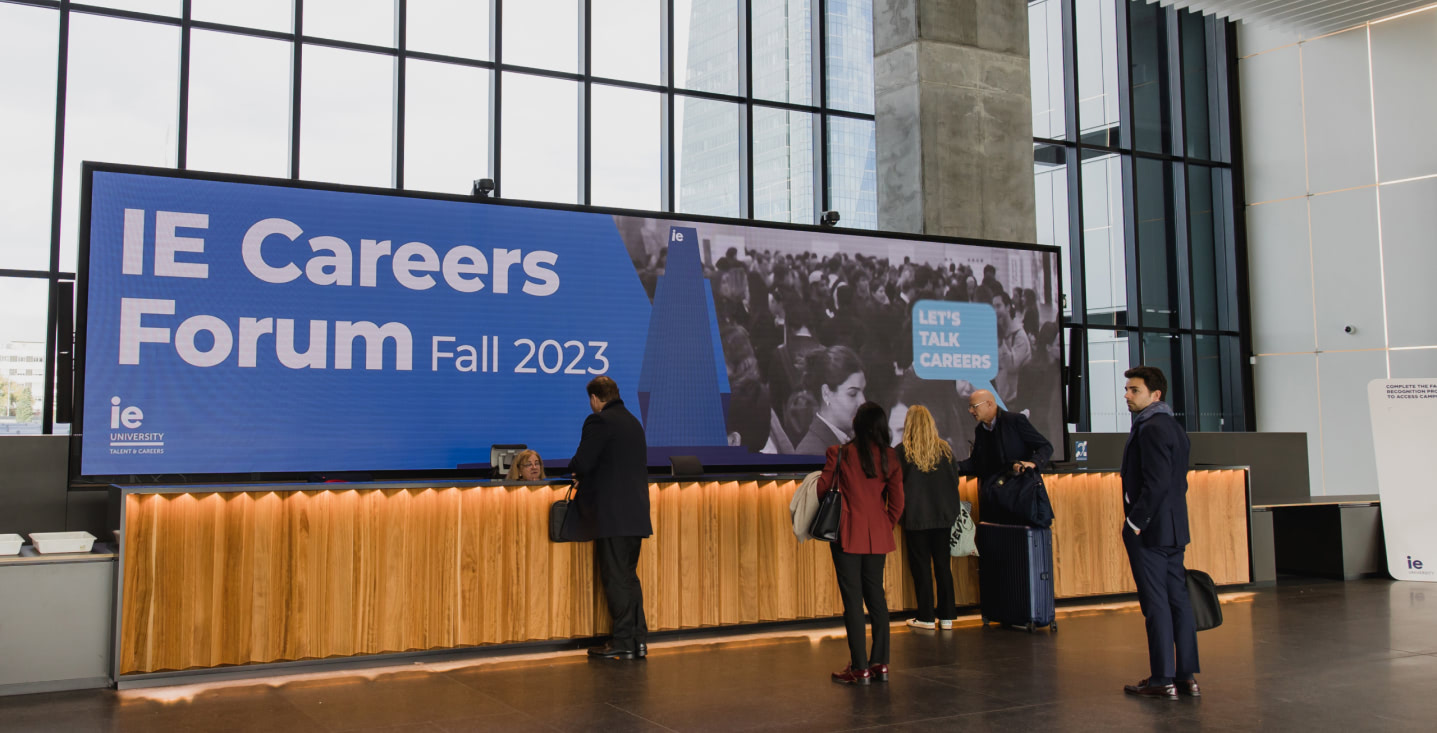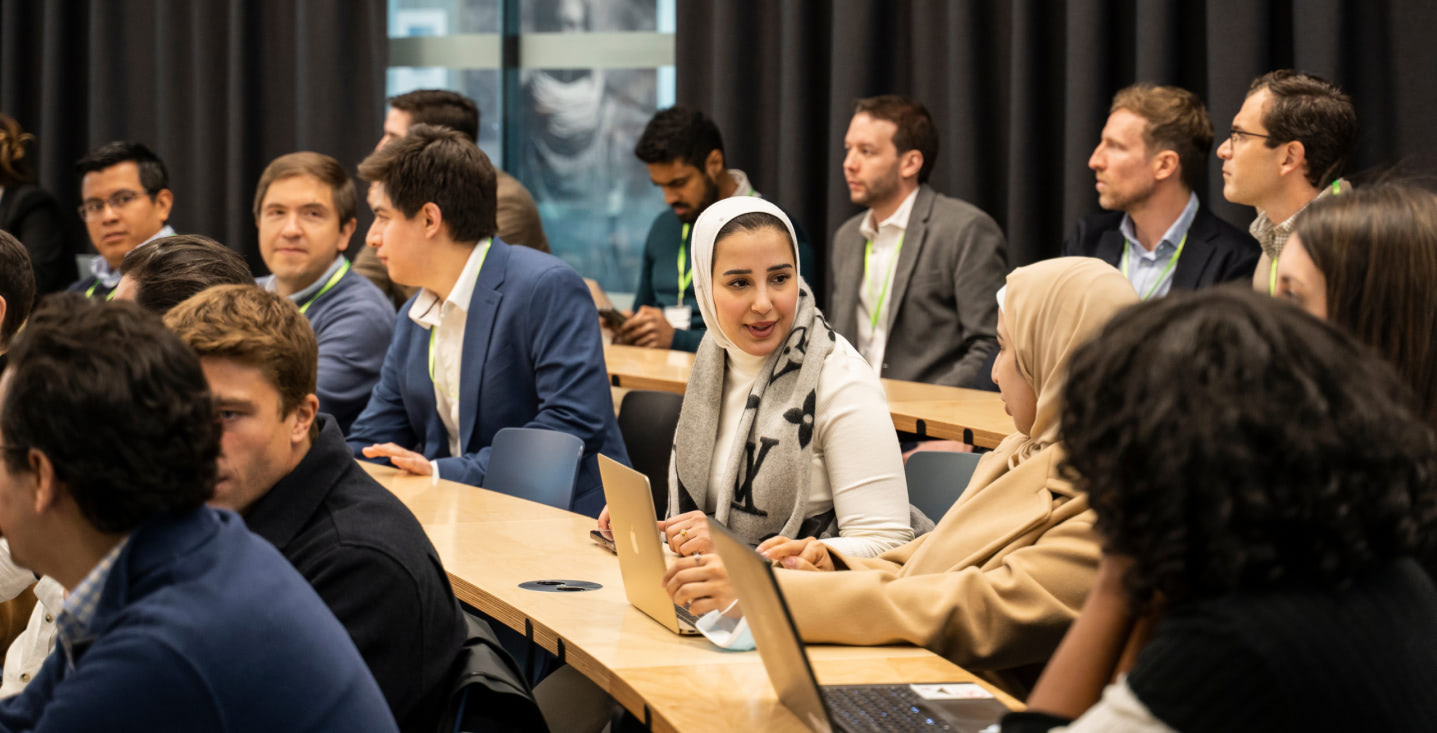19/01/2023
In a recent informative event, BIG (Bjarke Ingels Group) and our alumni share tips for building a successful international career in Architecture.
IE School of Architecture & Design recently hosted an informative panel discussion where experienced architects offered invaluable advice to students at the start of their careers. Among the panelists were João Albuquerque, the design partner at top architecture firm BIG (Bjarke Ingels Group); alumni Gonzalo Coronado and Elena Ceribelli; as well as acting dean of the school and director of the Master in Architecture, David Goodman.
The discussion covered a broad variety of topics, ranging from how one becomes a professional architect and the pathways to a career in architecture within the European Union. It also zeroed in on Albuquerque’s career trajectory, including his experience starting with BIG in its early days in 2008 and witnessing it transform into one of the premier architecture firms in the world. Ceribelli and Coronado also shared their experiences as both Bachelor in Architectural Studies students at the Segovia campus and as professional architects at BIG.
A diversity of ideas
Prior to joining BIG, Albuquerque had already accumulated an international slate of experience. He notes, “It is fun to jump around because it tremendously opens not only one’s way of seeing the world, but also one’s way of seeing and thinking about architecture.” Likewise, working in an international environment can only be beneficial to the innovation and creativity of any architecture firm. Albuquerque describes BIG as a “cocktail of nationalities” and asserts that the diversity of ideas and perspectives adds immense value to the firm’s work.
Coronado echoes this sentiment, pointing out that the same multiculturalism is available and celebrated at IE School of Architecture & Design. Internationality is a key component of the school experience, with Coronado emphasizing that being open to meeting and socializing with people around the world makes all the difference in creating innovative projects.
In the spirit of collaboration
Perhaps it is for this reason that increasing numbers of IE School of Architecture & Design alumni are joining the ranks at BIG and, according to Albuquerque, contributing to the firm’s increasing success. Apart from world-class training in the fundamentals of architecture, the school’s own emphasis on keeping an open mindset and, per Dean Goodman, “throwing ideas at the wall,” is precisely what leads to the best ideas. Albuquerque argues that, unlike those with more experience, the naïveté of young talent enables them to perceive opportunities where others see only obstacles.
Opening up to what the world has to offer and cultivating a flexible mindset are excellent training not only for creativity but also problem-solving, collaboration and adaptability. In the transition from academia to the professional environment, both Coronado and Ceribelli laud the spirit of open exchange they enjoyed first within their program and then at BIG, which the firm encourages among all employees as well. Sharing ideas and brainstorming together results in a richer outcome, while being open to others’ advice and feedback is fundamental to enabling growth as an architect.
Focusing on sustainability
Another central aspect of BIG’s approach to architecture is local focus, which translates into sustainability. This is also a major element in the school’s design module, aiming to train the socially responsible architects of the future. And it translates to workplace settings like BIG, where designs are ideated based on local customs, aesthetics, materials and climate. What’s more, everything from the design itself to the construction and maintenance of the finished product is done with sustainable technologies and approaches.
Albuquerque underlines that although housing—which comprises many of the company’s key projects—is the most basic form of architecture, there is still a huge amount of room for innovation.
Urban planning projects represent another important chunk of BIG’s project lineup; they are likewise designed with the balance between the city and the natural environment in mind.

Your path to architecture
Ultimately, Albuquerque, Ceribelli and Coronado can agree that becoming a great architect is a matter of dedication, openness to new ideas and the courage to put those ideas into practice.
For students interested in pursuing a career in architecture, IE School of Architecture & Design’s Master in Architecture is a perfect gateway between undergraduate architectural studies and the professional license needed to practice architecture in Europe and several other countries around the world. As Albuquerque asserts, “if you have the will and the thirst to learn, you are all set to succeed.”








